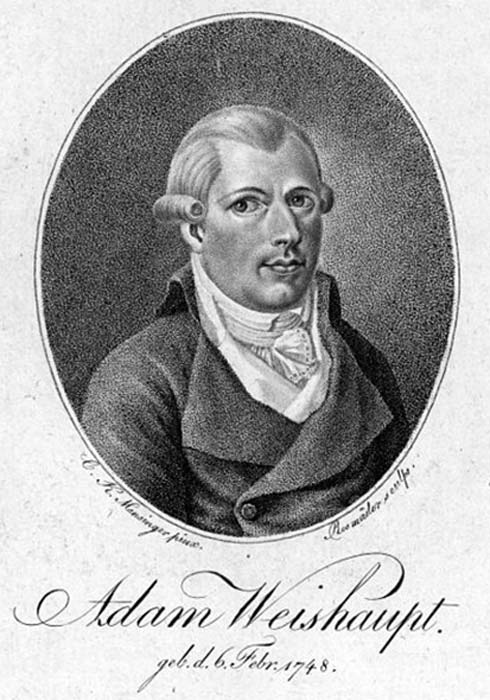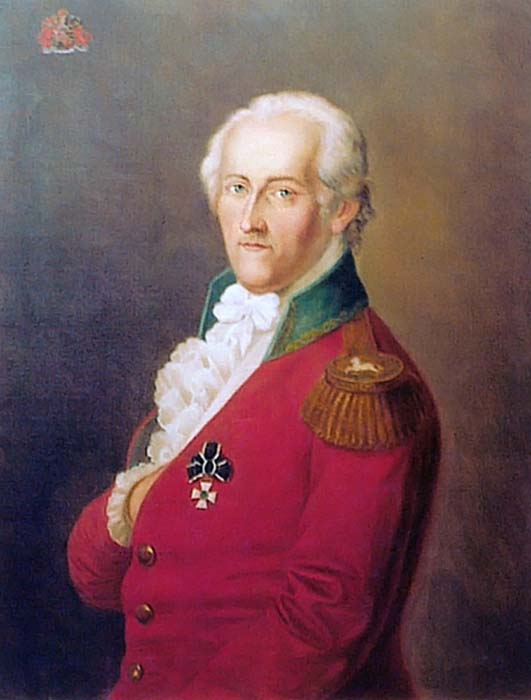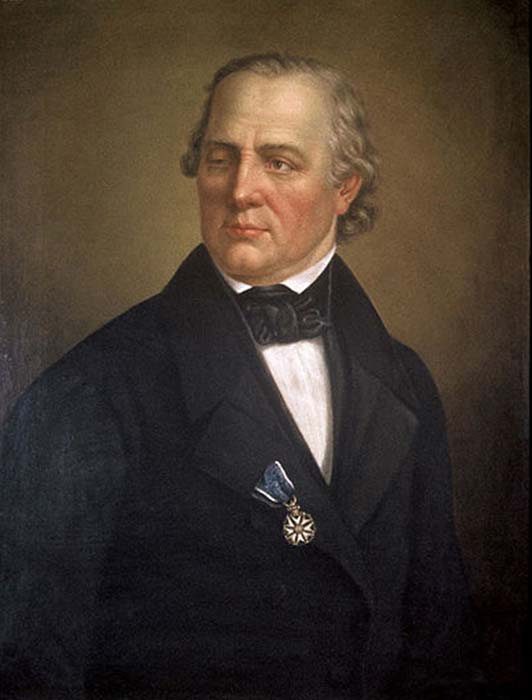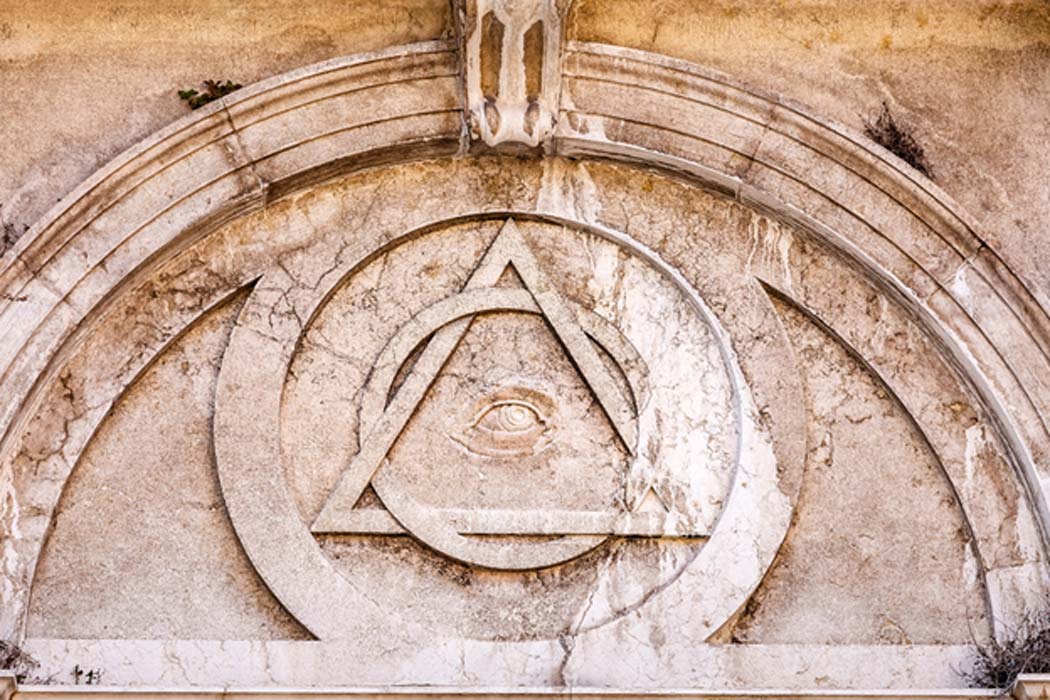The Man Who Started The Illuminati and His Thwarted Promotion of The Enlightenment
The Illuminati was a secret society that was established in Germany during the 18 th century. The Illuminati has a notorious reputation in popular culture, being associated with numerous conspiracy theories, including the orchestration of various important historical events, and the New World Order. Moreover, the Illuminati has inspired many works of fiction in the present day, which contributed further to their ill reputation. The original Illuminati, however, was much different from what it is believed by conspiracy theorists to be today and was very much in line with the dominant philosophical movement of that day, i.e. the Enlightenment.
The Bavarian Illuminati
The Illuminati, which historically refers to the Bavarian Illuminati, was founded by Adam Weishaupt, an 18 th century German university professor. Weishaupt was born in Ingolstadt, in the Electorate of Bavaria in 1748. His father was a law professor and passed away when his son was only five years old. Weishaupt was then raised by his grandfather, who was also a law professor as well as a proponent of the Enlightenment. At the age of seven, Weishaupt began attending a Jesuit school as his family was Catholic. By the age of 20 Weishaupt had earned his doctorate in law.

Adam Weishaupt, founder of the Illuminati, an 18th-century Bavarian liberal and secular secret society. (Rettinghaus / Public Domain)
Several years later, Weishaupt became a law professor at the University of Ingolstadt. A year later, in 1773, the Jesuits were suppressed and Weishaupt was appointed as a canon law professor. Until then, canon law was a subject taught exclusively by the Jesuits. Nevertheless, Weishaupt was the only layperson at his university to be teaching canon law and the Jesuits, though suppressed, still wielded considerable influence and power there. As Weishaupt was a proponent of the values of the Enlightenment, he clashed with the university’s Jesuits and began to feel frustrated by the way the Church was blocking his efforts to spread his ideals.
The Freemasons
Initially, Weishaupt intended to join the Freemasons, a secret society whose members shared the values of the Enlightenment. Though it is unclear as to why Weishaupt later decided against this, it has been speculated that he either lacked the funds needed to pay for his admission into one of the Masonic lodges or that he felt disillusioned by many of the ideas held by the Freemasons. Nevertheless, Weishaupt would draw inspiration from the Freemasons for the rituals and organizational structure of the secret society he was to start.

Freemasonry emblem. (kaetana / Adobe)
Order of the Illuminati
In May 1776, Weishaupt founded the Order of the Illuminati, a secret society whose mission was to “oppose religious influence on society and the abuse of power by the state by fostering a safe space for critique, debate, and free speech.” The first meeting of the Illuminati was conducted on the 1 st of May 1776 in a forest near Ingolstadt. This meeting included five of Weishaupt’s most talented law students, who were handpicked by Weishaupt himself. Weishaupt then began to recruit more members from like-minded people he had come to know at the university. One of the conditions for admission was that the candidate be less than thirty years of age, as Weishaupt believed that after this age it was difficult for a person to be influenced by new ideas. Additionally, Weishaupt joined a Masonic lodge a year after the Illuminati was founded and began recruiting from among the Freemasons for his secret society as well.
The Illuminati expanded rapidly in the following years. By 1782, this secret society probably had 600 members and two years later membership had increased to between 2000 and 3000. The members of the Illuminati came from all over Europe, including France, Italy, Poland, and Hungary. While the first members of the Illuminati were Weishaupt’s students, as it grew it came to include noblemen, politicians, intellectuals, doctors, and writers.
- Medieval Scottish Masons’ Multi-Dimensional Secrets
- Hidden Masonic Links to the Legendary Treasure of Oak Island
- The Mysterious Secret Society of Ancient India and The Nine Unknown Men of Ashoka

Adolph Freiherr Knigge, the most effective recruiter for the Illuminati. (Liberal Freemason / Public Domain)
The Illuminati’s successful expansion would also contribute to its downfall. In 1784, one of its ex-members, Joseph Utzschneider, wrote a letter to the Grand Duchess of Bavaria, supposedly revealing the activities of the Illuminati. One of the accusations levelled against its members was that they were conspiring with Austria against Bavaria and hence were a threat to the state. The Duke-Elector of Bavaria was warned by his wife about the Illuminati and promptly issued an edict banning the creation of any society not previously authorized by the law. A second edict, which expressly banned the Illuminati was issued in the following year. In 1787, a third edict, which confirmed the illegality of the society and the imposition of the death penalty for membership was issued.

Joseph Utzschneider revealed the activities of the Illuminati. (Olaf Simons / Public Domain)
As for Weishaupt, he lost his post at the University of Ingolstadt and was banished. For the rest of his life, he lived in Gotha in Saxony and taught philosophy at the University of Göttingen. Although Weishaupt’s secret society had disbanded, its legacy continued, as evidenced in the many conspiracy theories associated with the Illuminati. In fact, such conspiracy theories were already in circulation even before Weishaupt’s death in 1830. For instance, Weishaupt was falsely accused of having played a role in the French Revolution and of plotting a similar revolt against the Bavarian state.
Top image: Illuminati Triangle and All Seeing Eye on an ancient temple. Source: EdNurg / Adobe.
By Wu Mingren
References
Biographics, 2018. Johann Adam Weishaupt Biography: Founder of the Illuminati. [Online] Available at: https://biographics.org/johann-adam-weishaupt-biography-founder-of-the-illuminati/
Castro, J., 2013. What Is the Illuminati?. [Online] Available at: https://www.livescience.com/40048-what-is-the-illuminati.html
Gaia Staff, 2017. A Brief History of the Illuminati. [Online] Available at: https://www.gaia.com/article/what-is-the-illuminati
Gonzalez, L., 2018. The bizarre evolution of the Illuminati. [Online] Available at: https://www.history101.com/illuminati/
Hernández, I., 2016. Meet the Man Who Started the Illuminati. [Online] Available at: https://www.nationalgeographic.com/archaeology-and-history/magazine/2016/07-08/profile-adam-weishaupt-illuminati-secret-society/
The Editors of Encyclopaedia Britannica, 2019. Illuminati. [Online] Available at: https://www.britannica.com/topic/illuminati-group-designation
Vickery, M., 2017. The birthplace of the Illuminati. [Online] Available at: http://www.bbc.com/travel/story/20171127-the-birthplace-of-the-illuminati



















